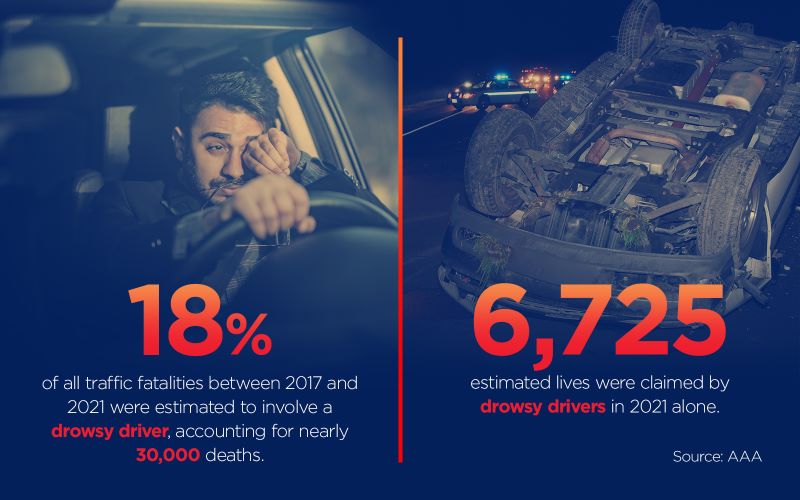The Quiet Killer Stalking Our Roads - Drowsy Driving
The Quiet Killer Stalking Our Roads - Drowsy Driving

Driving while battling the urge to fall asleep is a familiar feeling for many. However, soon-to-be-published research from the AAA Foundation for Traffic Safety reveals the shocking lethality of drowsy driving. And with Daylight Saving Time approaching (Sunday, March 10 at 2 AM), the darker mornings and lost hour of sleep will lead to more drowsy drivers. Previous Foundation research points directly to sleep loss as a key culprit in drowsy driving crashes.
According to the new Foundation study:

These figures are far higher than official government statistics, highlighting the underreported nature of drowsy driving crashes. According to NHTSA, there is agreement across the traffic safety, sleep science, and public health communities that the impact of drowsy driving is underestimated.
The AAA Foundation's study, based on in-depth crash investigations and national fatal crash data, estimates that drowsy driving is a factor in roughly ten times as many traffic fatalities as traditional crash data indicates.
Drowsiness impairs drivers in several ways:
Reduced alertness: Makes it harder to react quickly to hazards. Just one hour less than the expert-recommended minimum of 7 hours of sleep increases a driver’s risk of crashing.
• Impaired judgment: Increases the risk of making poor decisions on the road. Sleep deprivation increases a driver’s risk of making many ordinary mistakes, leading to crashes. Those deprived of sleep by 4+ hours have an impairment similar to those over the legal BAC limit.
• Hazardous Microsleeps: Can cause momentary lapses in consciousness, leading to loss of control of the vehicle and failure to respond to dangers on the road.
Self-Perception of Drowsiness: Previous Foundation research found that drivers often underestimate their drowsiness, putting themselves and others at risk.
So, what can you do to stay safe on the road?
• Get enough sleep before driving. Aim for at least seven hours of sleep per night.
• Travel at times of the day when you are normally awake. Avoid driving when you are tired or sleepy.
• Take breaks every two hours or 100 miles. Get out of the car, stretch your legs, and get fresh air. Plan and identify safe, comfortable places to take breaks. Don’t wait until you’re already feeling drowsy.
• Avoid heavy meals before driving. Eating a large meal can make you feel tired and sluggish.
• Avoid alcohol and drugs. Both can impair your driving ability. Besides harming driving directly, they can also amplify drowsiness.
• Listen to your body. If you start to feel tired, pull over and take a break. Don't try to push through it.
• Travel with an alert passenger and take turns driving. Sharing the driving can help you stay awake and alert.
• Don't underestimate the power of a quick nap. A 20- to 30-minute nap can significantly improve your alertness.
AAA supports the development of vehicle technology that can detect drowsiness and prevent drivers from operating a vehicle when impaired. This technology could help to save lives by preventing drowsy driving crashes.
About the AAA Foundation
Established in 1947 by AAA, the Foundation for Traffic Safety is a nonprofit, publicly funded 501(c)(3) charitable research and educational organization. The AAA Foundation’s mission is to prevent traffic deaths and injuries by researching their causes and by educating the public about strategies to prevent crashes and reduce injuries when they do occur. This research informs the development of educational materials for drivers, pedestrians, bicyclists, and other road users.
About AAA
Started in 1902 by automotive enthusiasts who wanted to chart a path for better roads in America and advocate for safe mobility, AAA has transformed into one of North America’s largest membership organizations. Today, AAA provides roadside assistance, travel, discounts, financial and insurance services to enhance the life journey of over 64 million members across North America, including over 57 million in the United States. To learn more about all AAA offers or become a member, visit AAA.com.












